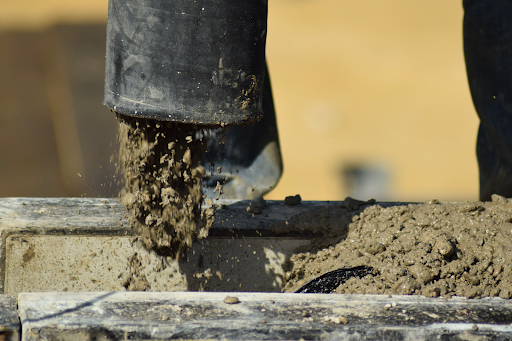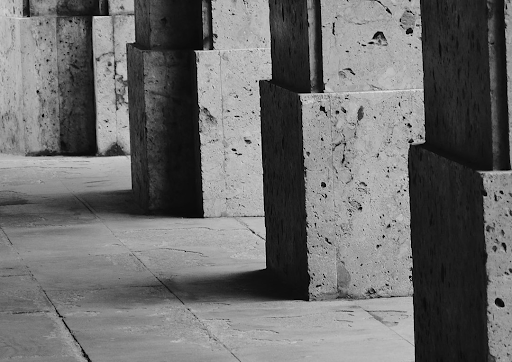When undertaking a concrete restoration and remodeling project, meticulous planning and understanding of the material is key. Whether you’re repairing an old concrete floor or revamping an outdoor patio, these endeavors can greatly increase the value and safety of your property. In the following sections, we’ll cover essential tips to ensure the durability and aesthetics of your concrete installations, keeping in mind that both functionality and design play a crucial role in restoration and remodeling work.
Assess the Existing Structure Beforehand
Before embarking on any concrete restoration work, it is crucial to conduct a meticulous assessment of the existing structure. Thoroughly examine the surface for any visible signs of damage, such as cracks, spalling, or discoloration. These indicators might signify underlying issues that require attention. By performing a comprehensive evaluation, you not only ensure effective project planning but also determine the extent of repairs needed to establish a stronger foundation for your remodeling efforts. Consider engaging a qualified structural engineer who can provide expert insights and recommendations tailored to your specific project requirements such as concrete form systems or other concrete techniques that are suitable for your project.
Choose the Right Materials
Selecting high-quality materials is paramount to ensure the long-term durability of your concrete restoration project. Opt for concrete mixtures specifically designed to withstand the specific stresses that your project might encounter, such as heavy foot traffic or extreme weather conditions. Incorporate cutting-edge chemicals for concrete grinding into your plan to achieve a smoother finish and enhance the adhesion of subsequent layers or coatings. Additionally, consider incorporating sealants and waterproofing agents that provide an extra layer of protection, preserving both the appearance and structural integrity of the concrete over time. Consult with a knowledgeable supplier or contractor who can guide you in selecting the most suitable materials for your project, taking into account factors such as climate and usage requirements.
Incorporate Proper Drainage
Proper drainage is often overlooked but plays a crucial role in concrete restoration. Water accumulation can lead to rapid deterioration of concrete structures. It is essential to ensure that your design includes a well-thought-out drainage system that efficiently directs water away, maintaining the resilience of the concrete against moisture-related damage. Consider consulting a drainage specialist or civil engineer to assist in designing an effective drainage system that meets local regulations and optimizes the performance of your concrete restoration project.
Follow Correct Mixing and Curing Procedures
The durability of concrete relies on the precise mixing of its components and the proper curing process after application. Adhering to the manufacturer’s guidelines for mixing ratios and allowing adequate time for the concrete to cure are essential steps to achieve a more durable and robust final product. Rushing through these stages can compromise the structural integrity of the concrete and may lead to future complications. By attentively following correct mixing and curing procedures, you ensure the longevity and performance of your concrete restoration project. Consider consulting with a concrete specialist or contractor who can provide guidance on the specific mixing and curing requirements for your project.
Pay Attention to the Finishing Touches
While functionality is vital, the aesthetic aspect of your concrete restoration should not be underestimated. A smooth finish, combined with thoughtful considerations like coloring or patterning, can elevate the overall appearance of the structure. Techniques such as stamped concrete or stenciling can add texture and visual interest, making your restoration project not only practical but also visually pleasing. By paying attention to the finishing touches, you create a visually appealing and well-rounded concrete restoration. Consider working with a skilled concrete finisher or designer who can provide expert advice and creative ideas to enhance the visual appeal of your project.
Regular Maintenance is Key
Once the restoration and remodeling projects are completed, prioritizing regular maintenance is essential. This involves routine cleaning of the surfaces, thorough inspection for any new cracks, and timely sealing as necessary. Additionally, applying a new sealant coat at regular intervals helps protect the concrete and prolong its lifespan. By implementing proper maintenance practices, you can extend the life of your concrete and keep it looking its best for many years to come. Consider creating a maintenance schedule and consulting with a maintenance professional who can provide guidance on the best practices for preserving the quality and appearance of your restored concrete.
 Executing a successful concrete restoration and remodeling project requires a synergistic approach that encompasses thorough assessment, material quality, sound drainage, meticulous mixing, and curing, as well as the aesthetic finishing touches. By adhering to these foundational strategies and maintaining regular upkeep, homeowners and developers alike can ensure the longevity and beauty of their concrete structures. Remember, concrete restoration is not just a process of repair; it’s an opportunity to enhance and preserve the structural essence of your property for the future. Whether you’re a DIY enthusiast or a seasoned professional, consider these pro tips your blueprint for a concrete restoration project that stands the test of time.
Executing a successful concrete restoration and remodeling project requires a synergistic approach that encompasses thorough assessment, material quality, sound drainage, meticulous mixing, and curing, as well as the aesthetic finishing touches. By adhering to these foundational strategies and maintaining regular upkeep, homeowners and developers alike can ensure the longevity and beauty of their concrete structures. Remember, concrete restoration is not just a process of repair; it’s an opportunity to enhance and preserve the structural essence of your property for the future. Whether you’re a DIY enthusiast or a seasoned professional, consider these pro tips your blueprint for a concrete restoration project that stands the test of time.
